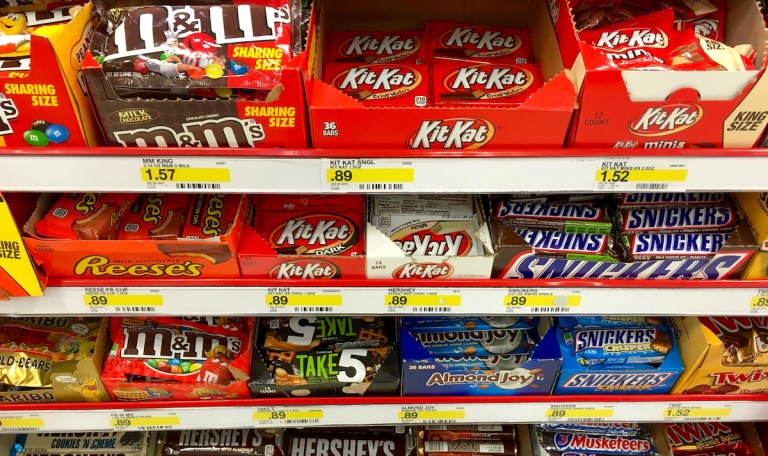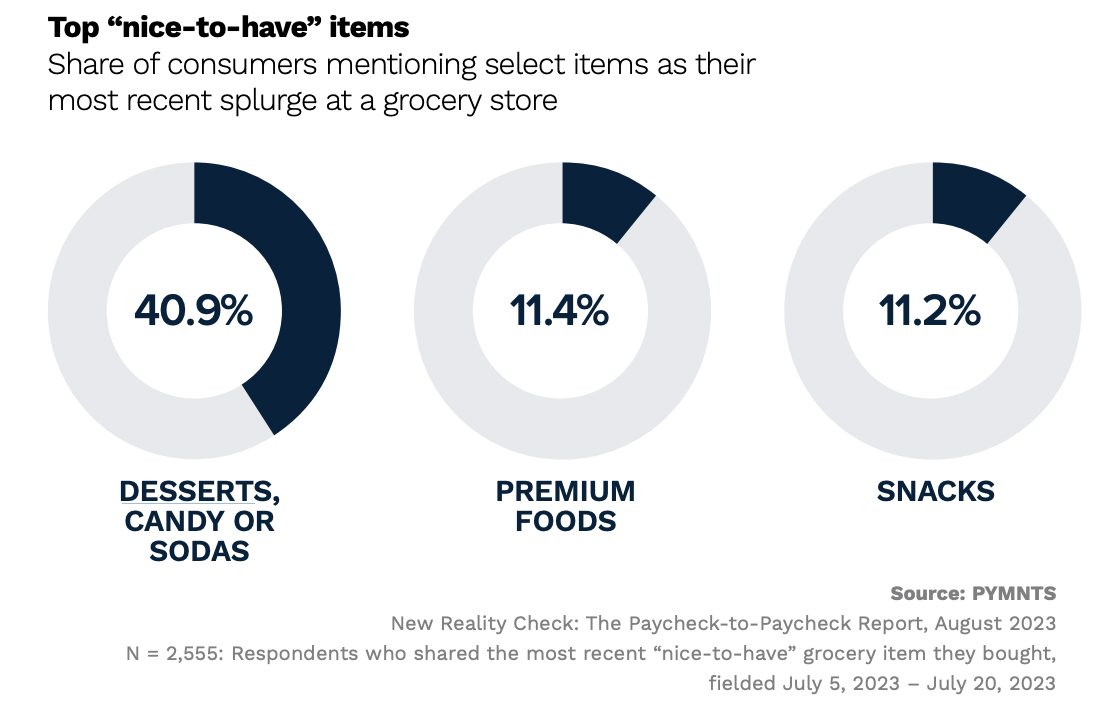The Consumer’s Sweet Tooth Drives Grocery Store Indulgences

As consumers continue to allow themselves small indulgences amid ongoing inflation, many continue to opt for sweets at the grocery store.
By the Numbers
For the latest installment of PYMNTS’ series “New Reality Check: The Paycheck-to-Paycheck Report,” created in collaboration with LendingClub, “The Nonessential Spending Deep Dive Edition,” we surveyed more than 3,400 U.S. consumers in July about their nonessential spending and how it affects their ability to manage expenses and put aside savings.
The results revealed that, among the three-quarters of all consumers who buy “nice-to-have” items at the grocery store at least sometimes, sweets are far and away the most common indulgence. Forty-one percent of grocery shoppers cited desserts, candy or sodas as their latest splurge — a higher share than said the same of any other such nonessential food or beverage.
The Data in Action
Snacks giant Mondelēz International shared on its most recent earnings call that its sweets saw ongoing strength amid inflation, while other categories took a hit.
“The consumer remains resilient, with elasticity holding up relatively well in chocolate and biscuit, while we saw some incremental elasticity in part of our cheese and grocery business,” Chief Financial Officer Luca Zaramella told analysts in July.
Similarly, Nestlé has seen candy sales continue to grow throughout this inflationary period, as François-Xavier Roger, the company’s executive vice president and chief financial officer, told analysts on its own earnings call around the same time.
“Growth in confectionery was 10.8%, reflecting strong broad-based demand for KitKat and positive sales development for key local brands,” Roger stated at the time.
However, these positive results are not necessarily being seen across the board. The Hershey Company shared in its financial results released around the same time that, in its North America Confectionery segment, organic volume/mix was down 4%.
Hershey Senior Vice President and Chief Financial Officer Steve Voskuil noted to analysts that the ongoing volume challenges that the company expects for the rest of the year largely are a result of price increases.
